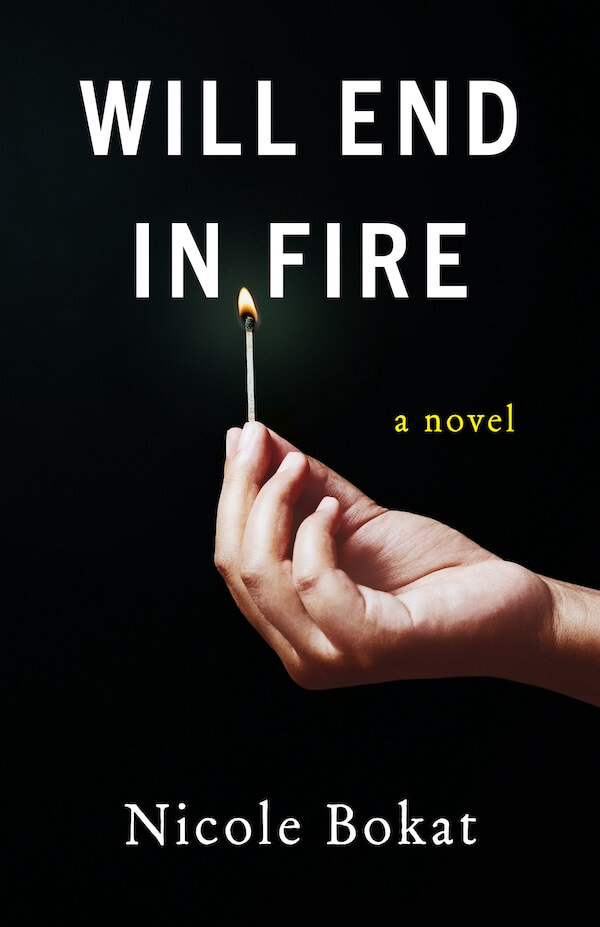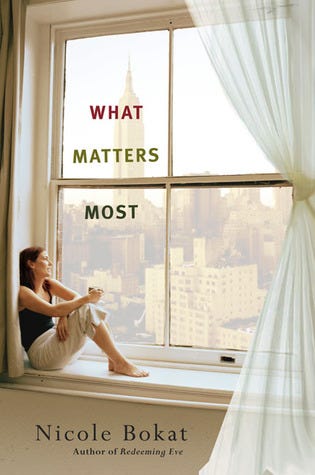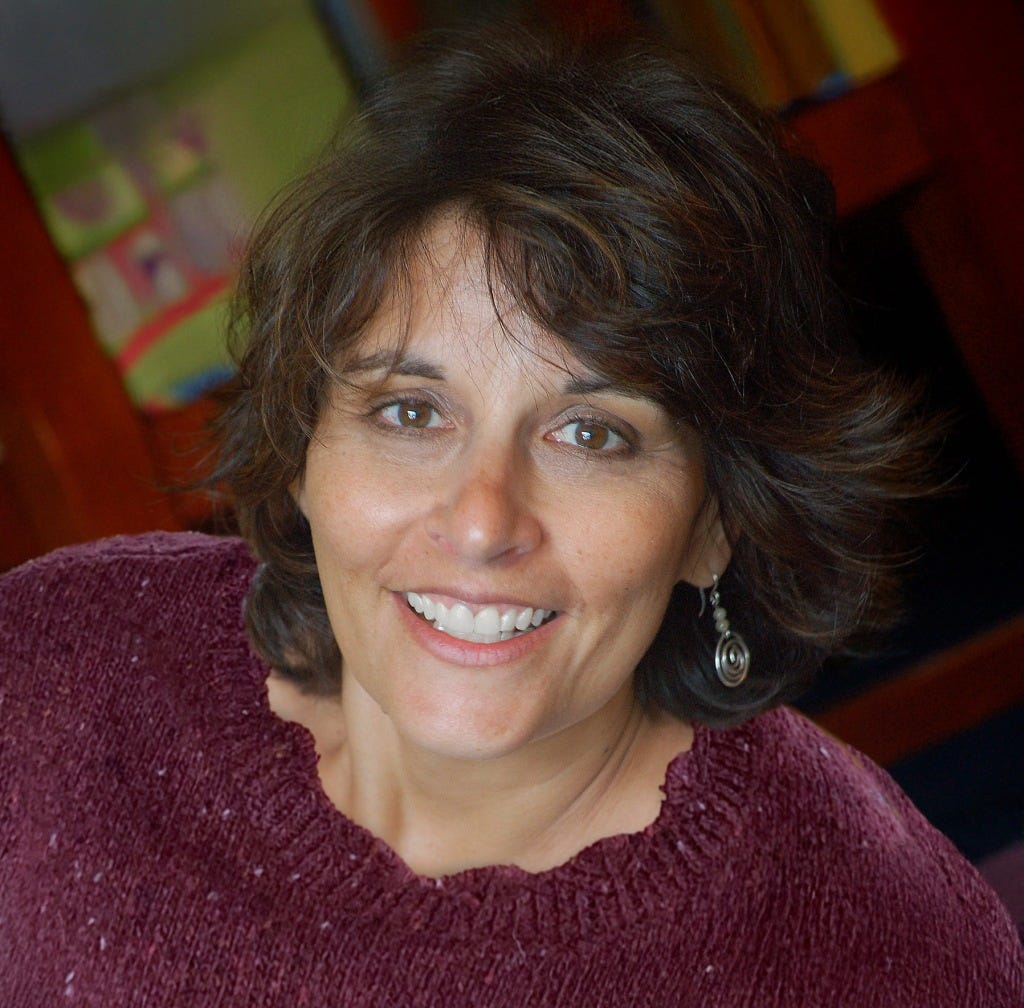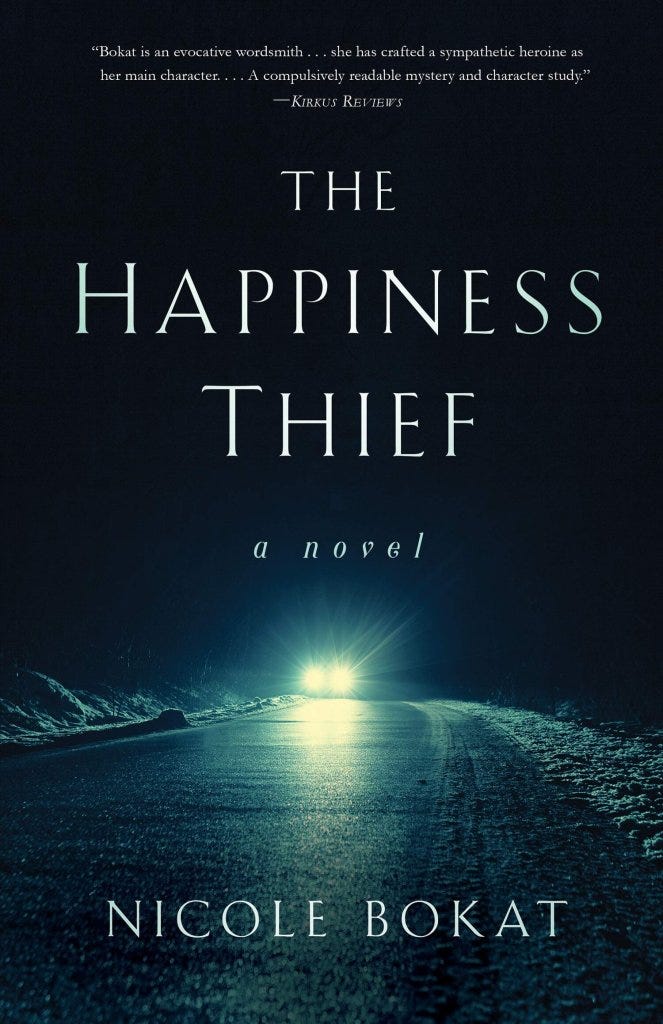Nicole Bokat: For the Love of Disturbed and Disturbing Characters
"When I first started trying to publish in the early 2000s, creating unsympathetic characters contradicted the demands of the marketplace."
Ellie Stone, the heroine in my latest novel Will End in Fire, is competitive, envious, and consumed by her own role in a tragic family event. She makes unwise choices out of fits of anger, such as accidentally starting a fire in a fellow teenager’s garage after being bullied by two other girls. Then, in her late twenties, she abandons her brother—who is battling addiction—even though she promised her parents to stay with him for a few days in their childhood home. She’s the latest in a series of difficult protagonists I’ve crafted in my novels—along with several who exhibit more serious signs of psychopathology.
Why am I fascinated by psychologically damaged people? Perhaps it began with the fact that my father was a psychiatrist—back before the job mostly consisted of dispensing medication—and my childhood home was stacked with Freud’s tomes, along with those of his proteges. From the time I was a pre-teen, I read them in our attic, mulling over both the insights into human nature and the sexism (which my own father didn’t display). While I had a stable, upper middle-class upbringing, there were cracks that I refused to see, or didn’t have the sophistication to name, within it. I wrote to discover what they meant, ultimately choosing to focus on complex, unhinged, or wounded characters, as they provided drama and psychological heft. I lifted some of my family members’ traits and exaggerated them for dramatic purposes. Most writers draw from the world they inhabit, even if only on an emotional level. Better to appear in fictional form than memoir, both for privacy’s sake and to inhabit different people and invent circumstances.
But when I first started trying to publish in the early 2000s, creating unsympathetic characters contradicted the demands of the marketplace. For too long “Women’s Fiction and Chick Lit” required self-reflection, emotional growth, and happy endings. Most involved romance, a celebration of female friendships, a desire for motherhood or traditional values that would play well in Middle America (as explained by the editor of my second novel, What Matters Most—the title changed from my original one and given a pink cover to appeal to a particular audience).
The more I read, the more I discovered an array of power-hungry egoists and sociopaths in Western Literature. Most sprang from the male imagination. Their tragically flawed anti-heroes were punished in some violent fashion, “slain” in battle, literally condemned to Hell, or shot in a swimming pool. Their female villains ended up cast out of society, going mad, becoming suicidal or, more often than not, dead: think Lady Macbeth, Goneril and Regan, Anna Karenina, Emma Bovary. The list goes on and on.
Of course, there were exceptional female writers breaking through (mostly by using male pseudonyms: George Eliot and the Bronte sisters among them). Kudos to Emily Bronte for creating two of the most famous amoral heroes in English literature. Heathcliff and Catherine—he sadistic and abusive, she egotistical and cruel—would be considered “deplorables” in today’s lingo. Then there is the queen of realistic narcissists, Jane Austen. For every Elizabeth Bennet, Marianne Dashwood, or Anne Elliot, Austen counteracted with a dazzling array of insufferable yet often hilarious louts: Mr. Collins, Mr. Wickham, Mr. Eliot, Mrs. Bennet, and Mary Crawford among them. Mary, in Mansfield Park, is particularly delightful: “Selfishness must always be forgiven, you know, because there is no hope of a cure.”
Few people have Austen’s talent for creating lovable but unlikable characters. Most of us don’t possess her flair for satire, her perfect ear for dialogue, and her deep understanding of human nature. Luckily, we aren’t held up to that standard. But likability still plays a role in readers’ and reviewers’ critiques—especially of women novelists. Over the years, I’ve received feedback from writing professors, agents, and editors asking me to make my heroines more “relatable,” which runs the gamut from having them wear different clothes and lipstick (in a writing group) to sulking less, to cut out an abortion (editors), to making them less “weepy” or “self-involved” (agents).
Gendered criticism began in graduate school. A famous male novelist critiqued two stories one week: mine and a male student’s. While complimenting my craftsmanship, he informed the class that my short story about a fractured family—young adult daughters dealing with the fallout of their parents’ divorce—was most appropriate for a women’s magazine. He declared that the young man’s tale, in which the hero displays disregard for women, then acts out violently, ending up in jail, was “a coming of age” story.
Still, I pushed back against the stereotypes. Writing my first novel, I became immersed in the world of my characters and didn’t judge them for their faults or vulnerabilities, didn’t worry about what the marketplace would embrace. Over time, unappealing creatures appeared on my pages, some dangerously untrustworthy, some just emotionally unavailable. Victim and victimizer. Shaky mother-daughter relationships. Sibling rivalry. Unreliable narrators with spotty memories and guilty consciences.
After I’d signed the contract for my first novel, Redeeming Eve, I received two notes from the editor: cut 50 pages and have “the girl” cry less. The “girl” was Eve, who is facing crumbling career aspirations while caring for a newborn. Luckily, my editor didn’t ask me to soften Eve’s edges—her inward gaze, her longing to escape—or to tone down her narcissistic mother who suddenly is thrust into the limelight. The tone of the book is humorous, not angry, rage being the most unforgiving emotion for women to express.
Years later, one agent declared that Natalie, the protagonist of my third novel, The Happiness Thief, was “too depressed and whiny.” She admitted to not understanding the allure of Girl on the Train, as that also featured a “dreary, self-involved” heroine. I stubbornly believed that Natalie was not dreary but wounded and deserved to have her story told. A victim of a childhood car accident that killed her mother, she wrestles with post-traumatic stress, self-doubt, and an obsession with her Happiness Guru stepsister’s unfettered confidence, charisma, and success. Both of the main female characters display unbecoming qualities that heroes can reveal with more acceptance.
When a writer who lives by the unsympathetic narrator breaks through as a bestseller, it gives me hope. Over the years, I’ve seen that happen more frequently, especially in literary fiction and thrillers.
In My Year of Rest and Relaxation, Ottessa Moshfegh’s nameless narrator is as unsympathetic as they come. Her traumatic childhood—devoid of love or parental attachment—causes her to sink into such a deep depression that she seeks out a plethora of medication from a kooky psychiatrist to keep her asleep for dangerously long patches. In Moshfegh’s hands, an entitled Upper East Side young beauty manages to be hateful yet vulnerable. Then there’s Megan Abbott, who spins tales about fiercely competitive women—some who tip over into sociopathy like Diane in Give Me Your Hand and Devon in You Will Know Me. From them, the reader ascertains that, without the proper parental guidance, even the intelligent or talented among us can develop a black hole at the core of our being. These heroines remind me that the darker emotions are acceptable and deserve to be mined by women, for women.
And that was my intention with Ellie, Natalie, and a slew of other characters in my work. I suspect that while some are seeking a cozy read or unexpected plot lines, the spunky heroine who finds her mate or solves the mystery, others are like me. They are attracted to books that explore the psyches of damaged creatures, that present acts on the page most of us would restrain from doing in life—male and female alike. As Edna O’Brien claimed, “That is the mystery about writing: it comes out of afflictions, out of the gouged times, when the heart is cut open.”
Nicole Bokat‘s first novel, Redeeming Eve, was published by The Permanent Press. It was nominated for both the Hemingway Foundation/PEN award and the Janet Heidinger Kafka Prize for Fiction. What Matters Most, her second novel, was published by The Penguin Group. Her third novel, The Happiness Thief, was published by She Writes Press and was a 2021 Foreword Indie Awards Finalist. Will End in Fire, her latest novel, was published in October 2024 by She Writes Press.
Nicole has a Masters in Creative Writing and a Ph.D. in literature (both from New York University) and is the author of a scholarly work, The Novels of Margaret Drabble. She has taught writing and literature at NYU, the New School, Hunter College, and Mediabistro, and has written essays and articles for a variety of national publications, including The New York Times, Parents, and The Forward. She lives in Montclair, New Jersey, with her husband and dog, Ruby, and has two sons.
You can follow Nicole here:
Facebook: facebook.com/nicolebokat
X: @NicoleBokat
Instagram: @nicolebokat







This is a riveting book. Love Nicole Bokat's writing.